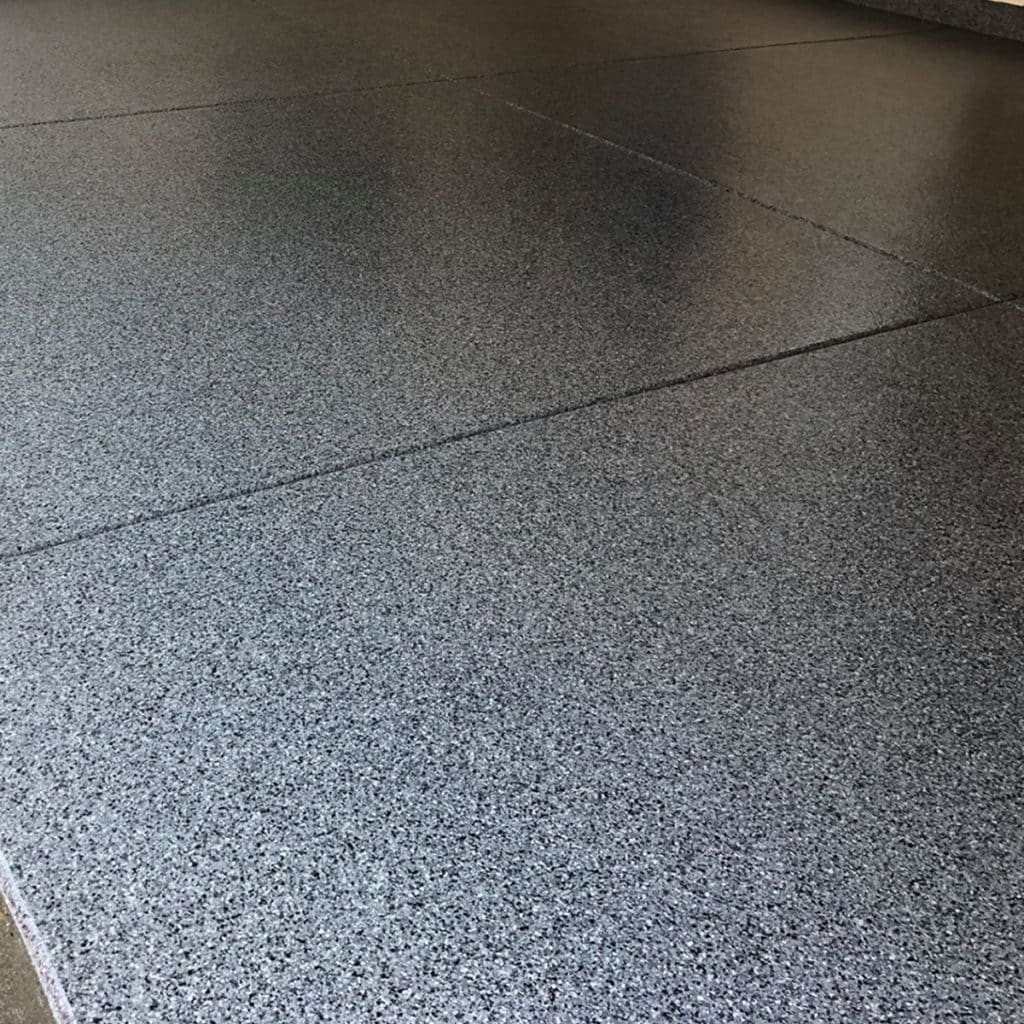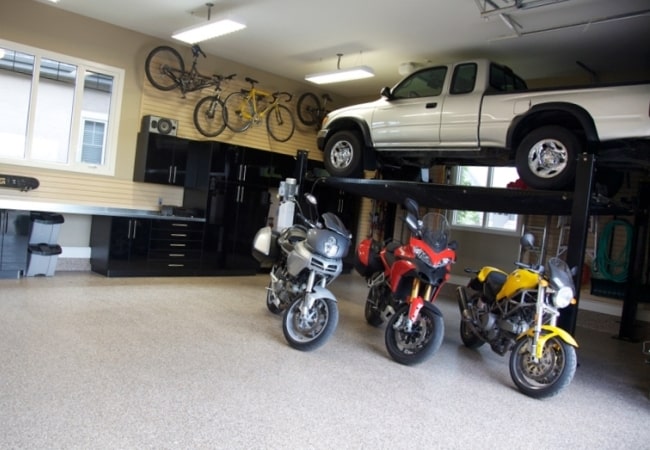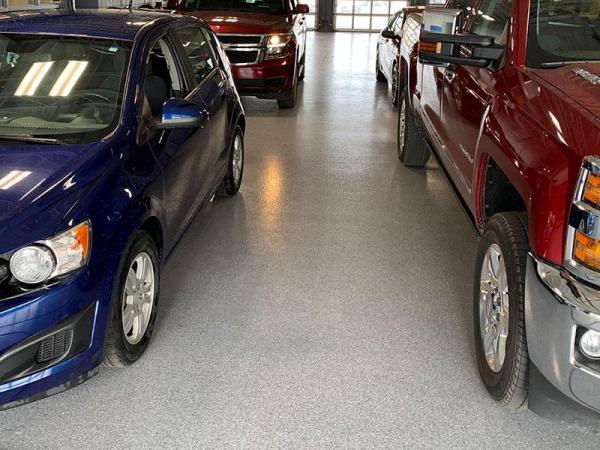Epoxy Floors
#1 Epoxy Floors in TN

Epoxy Floors
Epoxy floors are growing increasingly more popular due to their aesthetic appeal and how durable they can be, if installed properly. Epoxy floors are also quite easy to clean, which makes them all the more appealing for those looking to install floor coatings.
Epoxy floors are similar to polyurea and polyaspartic floor coatings, though they don’t last as long, and have several conditions that you should be aware of before deciding on epoxy floors.
What is Epoxy?
Epoxy is a chemical product that can produce strong primers, adhesives, and floor coatings. Epoxy floors are great for both commercial and residential applications, providing an aesthetically appealing floor that can be customized in color and design. Epoxy floors can look like marble and can have metallic, solid, and chip flakes, making them one of the most customizable floor coating options. They create a smooth surface and can be quite durable.
What You Should Know About Epoxy Floors
While epoxy flooring can be very attractive, they’re not a good option for floors that are exposed to sunlight. This is because epoxy isn’t a UV resistant material, so if your epoxy floor has a lot of sun exposure, the tans can turn yellow and the grays green. It’s best to install epoxy floors in places that receive less sunlight, to ensure they maintain their beauty.
Epoxy floors don’t hold up well when they are applied to a sealed or polished concrete surface. It bonds well to fully cured and properly prepared concrete surfaces, though, which means that the concrete must be cleaned, acid etched, and/or ground. It can take 30 days for concrete to cure, and epoxy tacks on another 5-8 days to your floor process, while other floor coatings can be done within a day.
In addition to taking longer to apply than other floor coatings, epoxy also releases strong fumes, which means that proper equipment and ventilation is essential when applying this floor coating. It also needs to be sanded and recoated every 5-8 years, due to the fact that epoxy does not last as long as other floor coatings.
Epoxy is very smooth, which gives it a high gloss finish, but this also means that it can be more slippery than other surfaces. Epoxy flooring can be excellent for indoor applications, but if you wish to install them on spaces that get driven on or must withstand high impact, such as garage floors, you should consider opting for another type of floor coating instead.
Pros Of Epoxy Floors
Epoxy floor coatings have several benefits that make people lean towards this option for their floors. Some of the benefits of epoxy floors are:
- Durable
- Easy to clean
- High gloss surfaces
- Variety of finishes
- Can be used for indoor commercial and residential applications
- Less expensive than other floor coatings
- If installed by professionals, it can protect from cracking and dirt
Cons Of Epoxy Floors
However, there’s a multitude of reasons why people are cautious about epoxy floors. Some of the disadvantages to epoxy flooring are:
- Time consuming installation
- Precision installation is a necessity
- Potential curing complications
- Strong odors or VOC’s
- Less cost-effective in the long term
- Easily scratched
- Slick
- Not UV resistant; yellows over time
- Vulnerable to hot tire pickup
- Lower strength than other floor coatings
- Indoor only application
- Vulnerable to chipping, cracking, peeling, and abrasion

How Does Polyaspartic Compare to Epoxy?
Though floor coatings all share similar characteristics, they are not created equal. Polyaspartic floor coatings and epoxy floors both are beautiful, durable, and can offer protection, but they have a number of marked differences. Epoxy is a very sturdy product, making it great for indoor floors, but polyaspartic is a more flexible option, making them more resistant to chipping, cracking, peeling, and abrasion.
Polyaspartic floors are strong, UV resistant, and can be used both indoors and outdoors. They’re quick to install, being done within a day, and have virtually no odor. Polyaspartic floor coatings are more expensive upfront than epoxy, which is why people tend to opt for epoxy instead, even though epoxy is more expensive in the long run.
To learn more about epoxy flooring and other floor coating options, please contact our experts at My Garage Floor Guys. We want to make sure that your floors are beautiful and last a long time.
Ready To Transform Your Garage?




